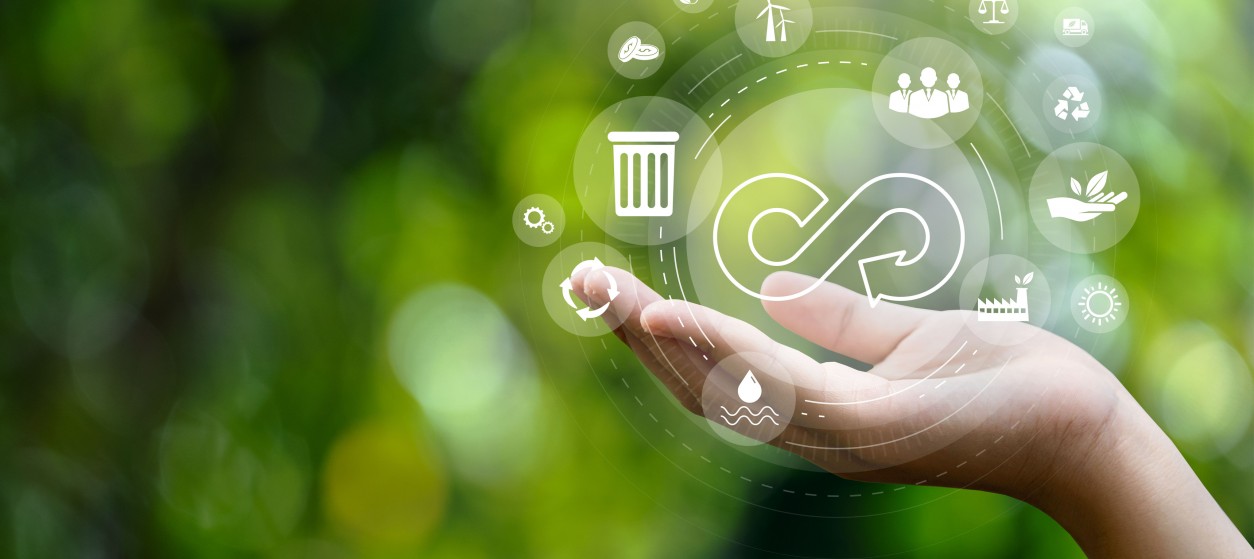In recent years, the concept of the circular economy has gained significant attention as a sustainable alternative to the traditional linear economic model. At its core, the circular economy aims to eliminate waste, reduce resource consumption, and promote the efficient use of materials. However, achieving such goals requires the support of cutting-edge technological solutions based on digital enablers like Big Data, cloud computing and Artificial Intelligence (AI). This is where digital platforms for a circular economy come into play. These platforms leverage advanced digital technologies to enable businesses, consumers, and governments to transition towards a more sustainable way of operating.
Circular Economy TechSustainable Digital Platforms
One of the most prominent types of digital platforms for the Circular Economy (CE) are the so-called circular economy tech-sustainable digital platforms. These platforms represent a new generation of digital solutions designed specifically for supporting circular economy practices. They integrate various technologies such as cloud computing, Internet of Things (IoT), Artificial Intelligence (AI), and distributed ledger technologies (i.e., blockchains) to enable enterprises to manage their sustainability initiatives effectively. In several cases they also comprise circular economy software i.e., software packages that facilitate the implementation of CE practices.
One of the key features of these platforms is their ability to collect and analyze vast amounts of data from multiple sources, including for example data about supply chains, production processes, and consumer behavior. This data-driven approach allows businesses to identify opportunities for waste reduction, resource optimization, and product life extension. For instance, by analyzing product usage patterns, companies can identify opportunities for repair, refurbishment, or remanufacturing, which are processes that can extend the lifespan of their products and minimizing waste generation.
Eco-friendly Digital Platforms
Another category of digital platforms for CE are the eco-friendly digital platforms. They also represent digital solutions that align with the principles of the circular economy. Their primary objective is to reduce the environmental impact of digital technologies, which themselves have a substantial carbon footprint. Hence, eco-friendly digital platforms take various measures to minimize energy consumption, reduce greenhouse gas emissions, and promote sustainable practices. One of the most prominent approaches to the development of eco-friendly and environmentally friendly platforms for the CE is to optimize the energy efficiency of the data centers and cloud infrastructures that support them. For example, digital platforms can leverage edge computing technologies to bring computing power closer to the source of data. This reduces the need for long-distance data transfers and decreases energy consumption. Moreover, eco-friendly digital platforms often prioritize the use of renewable energy sources to power their operations, which is another measure that makes them more sustainable and classifies them as technologies for sustainability.
Circular Economy Tools
Most digital platforms for the CE comprise one or more CE tools. Circular economy tools are essential components of digital platforms that facilitate the implementation of circular economy practices. These tools provide functionalities such as product lifecycle management, waste tracking and traceability, and resource optimization. Specifically:
- Product lifecycle management tools enable companies to track and manage their products from cradle to grave. They allow the monitoring of product performance, usage patterns, and maintenance history, enabling businesses to make data-informed decisions about repair, refurbishment, or recycling. Product lifecycle management tools can therefore drive the development of digital innovations in recycling and other CE processes. By extending the lifespan of products, companies can reduce their resource consumption and waste generation.
- Waste tracking and traceability tools help businesses monitor and manage the flow of materials throughout their value chains. These tools enable real-time visibility into waste generation, disposal, and recycling, facilitating the identification of inefficiencies and opportunities for improvement.
- Resource optimization tools leverage advanced analytics and machine learning algorithms to optimize resource allocation and usage. These tools consider various factors such as supply and demand fluctuations, resource availability, and environmental impact to identify the most efficient and sustainable allocation strategies. By minimizing waste and maximizing resource utilization, these tools contribute to the circular economy’s objectives.
Eco-conscious Digital Solutions and GreenTech Platforms
Alongside the different types of digital platforms for the CE, Eco-conscious digital solutions and GreenTech platforms represent a broader ecosystem of sustainable digital technologies that contribute to the circular economy. These solutions encompass a wide range of applications, including renewable energy management, smart grid systems, sustainable transportation, and green building technologies. In particular:
- In the renewable energy sector, digital platforms enable the efficient integration of renewable energy sources into the power grid. By leveraging real-time data and predictive analytics, these platforms optimize the generation, distribution, and consumption of renewable energy, reducing reliance on fossil fuels and promoting a cleaner and more sustainable energy system.
- In the transportation sector, digital platforms can support the transition to more sustainable modes of transportation, such as electric vehicles and shared mobility services. These platforms enable the integration of data from various sources, such as vehicle sensors, traffic sensors, and weather forecasts, to optimize transportation routes, reduce congestion, and minimize emissions.
- Green building technologies leverage digital platforms to improve the energy efficiency and sustainability of buildings. These technologies include smart building automation systems, energy management platforms, and occupancy sensors, among others. They optimize energy consumption, reduce waste, and promote sustainable practices in order contribute to more eco-friendly and sustainable built environments.
Circular Design Technologies
Circular design technologies refer to the subset of CE technologies that enable the implementation of circular economy principles in product design and development. These technologies aim to create products that are durable, repairable, recyclable, and made from sustainable materials, thereby reducing waste, and promoting resource efficiency. They encompass a range of innovative solutions that integrate digital tools, materials science, and advanced manufacturing techniques. A prominent example of a circular design technology is the so-called “Design for Disassembly” (DfD). DfD involves designing products in a way that facilitates easy disassembly at the end of their lifecycle, enabling the recovery of valuable materials for reuse or recycling. By considering disassembly during the design phase, manufacturers can ensure that products are not only functional and aesthetically pleasing but also easy to take apart, reducing the energy and effort required for recycling.
Another example is Material Informatics, which incorporates data-driven approaches and machine learning algorithms to optimize material selection and design. The analysis of vast databases of material properties and of their environmental impact enables designers to identify sustainable materials that meet the required performance criteria. Therefore, this technology enables the development of products with reduced environmental footprints and improved recyclability.
In recent year the advent of Additive Manufacturing, also known as 3D printing, plays a vital role in circular design technologies. It offers the ability to create complex geometries and customize products on demand. This technology enables the manufacturing of products with reduced material waste, as only the necessary amount of material is used. Moreover, it facilitates local production, which minimizes transportation emissions and enables a more distributed circular economy model.
Overall, the various types of digital platforms for the circular economy represent a powerful toolset that drives the transition towards a more sustainable and efficient economic model. These platforms leverage advanced technologies to enable businesses, consumers, and governments to reduce waste, optimize resource usage, and promote sustainable practices. Hence, they can collectively contribute to a more sustainable and prosperous future. This is also the reason why modern enterprises must consider embracing these sustainable business technologies and incorporating green digital solutions into their everyday practices.








